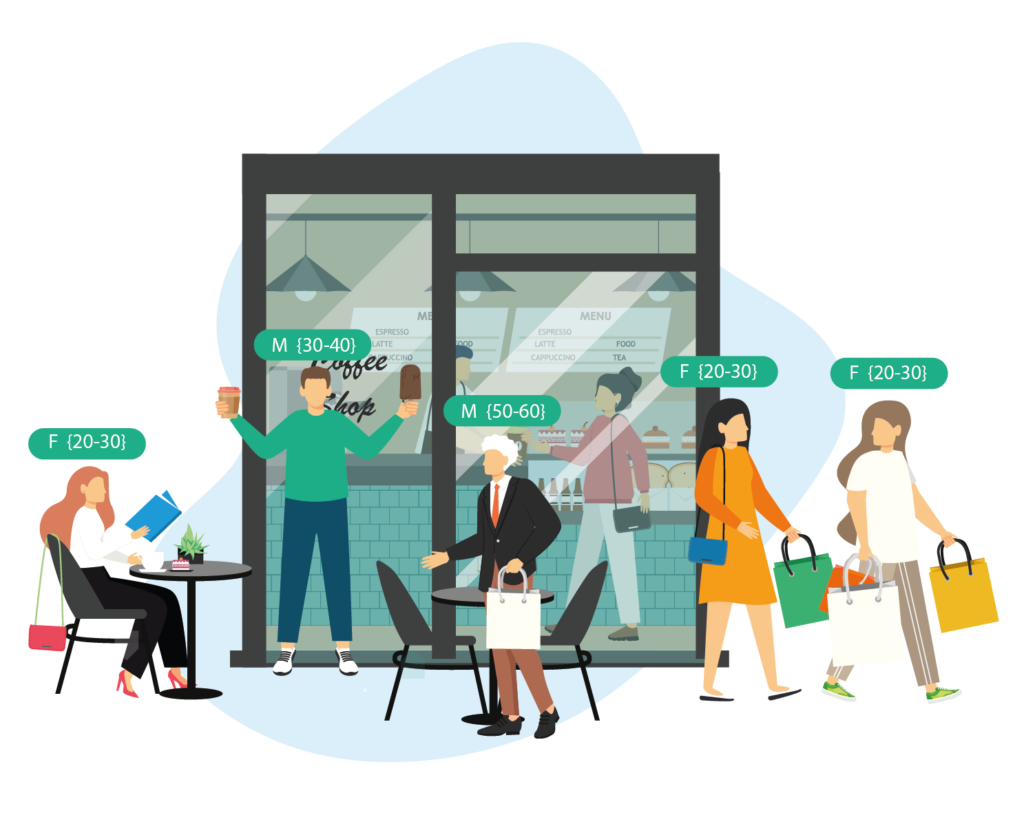What’s the right retail analytics solution for your business?
Retail Analytics is defined as the technology that brands and retailers leverage to increase the likelihood of an initial and repeat purchase. These solutions improve the customer experience, increase brand equity, streamline in-store operations, and ultimately drive sales and reduce costs for retailers.
A fundamental part of retail analytics is capturing footfall volumes and the behaviour of your customers. The methods used to capture footfall traffic within the brick-and-mortar retail space are undergoing a transformation driven by technological advances. These technological advances are driving greater granularity of data capture and offer the options to deploy very quickly with zero disruption to operations.
But with so many options out there, what is best for your business?
The latest technological offerings are:
- Wi-Fi
- Geolocation
- Visual Counting
Wi-Fi
Whilst Wi-Fi continues to have its place in the retail space as a method of keeping people connected, the drive for personal privacy legislation has made its ability to provide robust analytical insight far more unpredictable. Wi-Fi does retain its place in the solutions portfolio when trying to understand the path of movement around a space. Understanding the typical trends of customers who follow certain paths throughout a shopping centre, mall, retailer or even through an external high street or downtown area can add value but for absolute visitor counts, it is vision-based technology that really does offer far more options and unparalleled levels of accuracy.
For some destinations, it’s key to understand where visitors have come from, and geolocation data plays a role in delivering this information. This data is harvested through the scraping of apps on cell phones. By gathering data at this macro level, the retailer, retail destination, or downtown gain a better understanding of the radius of travel in the local area and it is also key if they depend heavily on trade from international tourism.
Geolocation
Geolocation and Wi-Fi tracking are non-visual based systems, and data for these is captured from devices as opposed to actual people. This means that the “count” is a count of devices not individuals, so there is a risk of inaccurate data as many people tend to carry at least two devices, if not more (ex. a smartphone and smartwatch). There is also a risk of data distortion as some consumers, who may be a key source of traffic to certain destinations or stores, may not carry a Wi-Fi enabled device with them at all. Both geolocation and Wi-Fi tracking are solutions that depend on compatible devices having location services and Wi-Fi activated. If these are not enabled by the device owner, data will not be captured.
Visual counting
Vision-based technology adheres to all GDPR and CCPA privacy legislation and allows highly accurate, precise, and consistent data to be collected and acted upon, which is why it is used by the leading retailers and destinations across the globe. Using vision-based technology does not mean adding extra cameras to a space, either. A more cost-effective and timely solution can be to leverage the existing CCTV / security camera infrastructure, which makes it possible to deploy AI-powered technology that can begin providing data that is over 98% accurate within minutes of activation. Within the view of a single camera, you can monitor multiple regions of interest by creating specific zones and detection lines. These extra levels of data granularity further enhance the solutions investment return.
Additionally, understanding how long people dwell within a space generally or even a specific zone within the retail space can provide evidence of a correct store layout, or identify where key advertising messaging should be placed for maximum return. Similarly, understanding if members of staff interact with potential customers who have dwelled in a certain area for a pre-determined time and alerting if they do so, ensures that every customer engagement is maximised. Having the ability to exclude staff from the count data further enhances the quality of the data as does understanding how many customers interacted or showed an interest in a particular product or shelf display. Understanding and alerting on the live occupancy of a space using data generated by a precisely defined count line is another feature that can be activated easily and reported directly into the hands of the store staff via an app.
Excellent customer service is also key and having triggers if queues in a retail space become too long and additional cash lanes need opening ensures that the customer journey remains a positive experience. Understanding any level of queue abandonment is another metric which is easy to ‘monetize’ and drives changing in-store staff behaviour. Going one step further, predicting when customers will reach the cash lanes is also possible, given the technological advances being made in this space. The ability to access and understand footfall counts with a high degree of predictability enables capture rate and sales conversation data to be reported, analysed, and more importantly, acted upon to maximise the ROI.
Use a mix of technology to see the whole picture
Retail has certainly changed, and the technology available to report on the many facets associated with consumer behaviour continues to evolve at a quick pace. With the power of privacy now placed firmly in the hands of the consumer, tracking them through geolocation and Wi-Fi only provides part of the picture but can be complementary to monitoring footfall traffic.
Understanding the customer’s ultimate objectives is a key that allows the technological options to be matched and even mixed giving a complete solution. One that provides the space owner with exactly the level of information they require in easily digestible reports or via a web portal or app. All in the knowledge that the data is being continuously monitored, has been validated twice and has the full backing of analytical insights and support.
MRI OnLocation for Footfall Analytics has a proven history in combining all technologies to provide the retailer, retail destination or downtowns with a comprehensive picture of the customer’s journey. Using AI-driven footfall analytics, it leverages the largest number of data points across the US and UK to provide insights and benchmarking analysis.
Explore the latest footfall data and trends in our resource center.
Footfall Analytics
Boost performance with actionable insights based on AI-driven footfall analytics
Learn more
MRI OnLocation UK Monthly Commentary – March 2024
Retail footfall shows signs of stabilising as early Easter break provides a modest rise from February Each month MRI OnLocation delivers insights on retail performance for UK retail destinations. March saw a modest rise in retail footfall across the …

